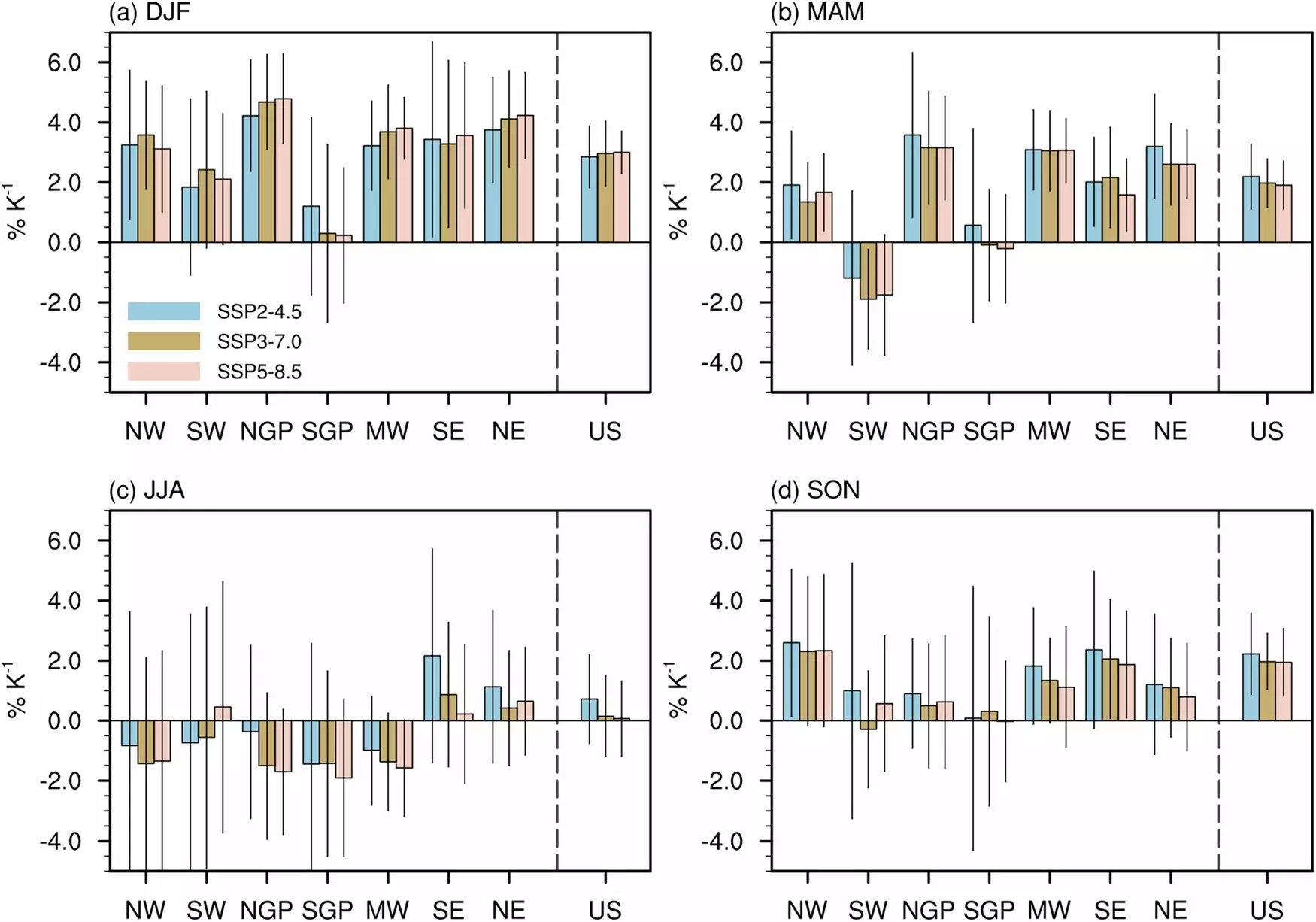As global temperature rises, a significant alteration in winter weather patterns is projected for the United States, with most regions bracing for wetter winters. A recent investigation spearheaded by Akintomide Akinsanola, an assistant professor at the University of Illinois Chicago, sheds light on the profound impact of climate change on winter precipitation. This study, published in the journal npj Climate and Atmospheric Science, utilizes advanced climate models to project how winter rainfall and extreme weather events are expected to evolve by the century’s end.
Akinsanola’s team employed a comprehensive analysis using 19 Earth system models, examining seven subregions defined in the National Climate Assessment Report. Their findings are alarming—overall winter precipitation is set to increase, with extreme weather events becoming more commonplace in many parts of the country. Particularly concerning is the forecast of “very wet” winters, which are on track to occur in the top 5% of historical winter precipitation totals. This means that regions previously experiencing such rare events might witness them happening once every four years by 2100.
The study meticulously quantified the expected changes in mean winter precipitation. According to their projections, the entire United States could see an increase of 2% to 5% of precipitation for every degree of warming. The Northwest and Northeast regions are anticipated to face the most significant increases, while the Southern Great Plains—comprising states like Texas and Oklahoma—exhibit less certainty in projections. Here, the anticipated wetness will likely be counterbalanced by an increase in extreme drought, which complicates projections and highlights the unique challenges faced by these regions.
The implications of these changes are far-reaching. The increase in precipitation, combined with a worrying trend toward rain rather than snow in many locations, culminates in a concerning scenario for agriculture, flood management, and water resources across the nation. As Akinsanola aptly states, “we’re not just talking about the mean precipitation; we’re also talking about an increase in extreme events.”
One of the essential takeaways from this research is the urgent need to address infrastructure resilience in the face of these imminent changes. Greater winter precipitation and the frequency of extreme events will inevitably place strain on drainage systems and urban planning. Current infrastructure may be ill-equipped to handle the reality of intensified rainfall and the resulting flooding, signaling a critical need for upgrades and improvements.
Akinsanola emphasizes this concern: “There will be a need for updating or upgrading infrastructure.” As our climatic backdrop shifts, so must our approach to designing and maintaining systems that manage natural resources and mitigate disaster risks. An overhaul in our thinking is paramount; rather than just accommodating the average conditions of yesteryear, we must prepare for increasingly tumultuous weather patterns.
While Akinsanola’s current findings provide a grave overview of winter precipitation changes, his future research aims to utilize more refined, higher-resolution models. This focus will allow for a closer look at the specifics of climate impacts such as heatwaves, compound droughts, and other extreme weather events, providing essential data for local areas that could help tailor adaptive strategies.
His collaboration with the Environmental Science Division at Argonne National Laboratory signifies a commitment to deeper, more localized analysis. As climate data continues to evolve, so too must our understanding of how these changes divide along geographical lines. Awareness of regional differences in precipitation trends is crucial for developing effective responses to mitigate adverse effects on vulnerable communities.
The pressing evidence of worsening winter weather due to climate change underscores the importance of proactive measures in infrastructure and policy. The transformative predictions outlined by Akinsanola and his team compel us to rethink our approach to climate resilience, urging a shift towards comprehensive planning that prioritizes adaptability to an increasingly volatile climate. As we move forward, encompassing preparation, awareness, and a willingness to adapt will determine our ability to navigate the uncertain waters of future winters.


Leave a Reply